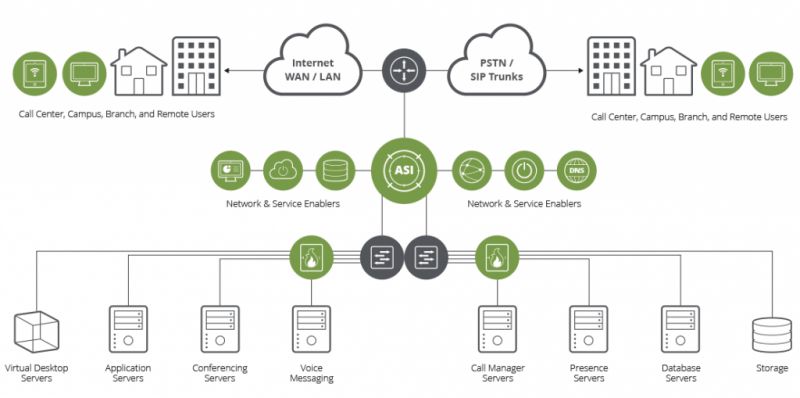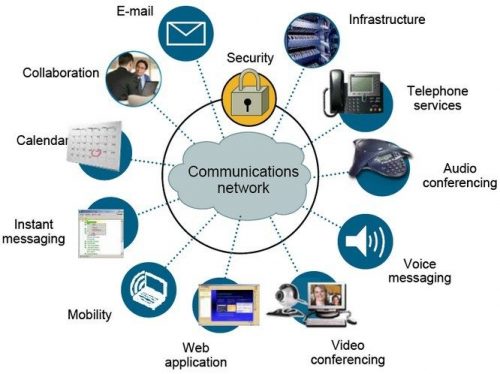Unified Communication
Unified communications (UC) is of enterprise communication services such as voice (IP telephony), mobility, audio, WEB AND Video Conferencing, instant messaging (chat), presence information, desktop sharing, data sharing, call control and unified messaging (integrated voicemail, e-mail, SMS and fax). UC is not necessarily a single product, but a set of technologies and products that provides a consistent unified user interface and user experience across multiple devices and media types.

The history of unified communications is tied to the evolution of supporting technology. Originally, business telephone systems were a private branch exchange (PBX) or key telephone system provided and managed by the local phone company. These systems used the phone company’s analog or digital circuits to deliver phone calls from a central office (CO) to the customer. The system —PBX or key telephone system— accepted the call and routed the call to the appropriate extension or line appearance on the phones at the customer’s office./p>
As companies began to deploy IP networks in their environment, companies began to use these networks to transmit voice instead of relying on traditional telephone network circuits. Some vendors such as Avaya and Nortel created circuit packs or cards for their PBX systems that could interconnect their communications systems to the IP network. Other vendors such as Cisco created equipment that could be placed in routers to transport voice calls across a company network from site to site. The termination of PBX circuits to be transported across a network and delivered to another phone system is traditionally referred to as Voice over IP (Voice over Internet Protocol or VoIP). This design required special hardware on both ends of the network equipment to provide the termination and delivery at each site. As time went by, Siemens, Alcatel-Lucent, Cisco, Nortel, Avaya, Wildix and Mitel realized the potential for eliminating the traditional PBX or key system and replacing it with a solution based on IP. This IP solution is software-driven only, and thereby does away with the need for “switching” equipment at a customer site (save the equipment necessary to connect to the outside world). This created a new technology, now called IP telephony. A system that uses IP-based telephony services only, rather than a legacy PBX or key system, is called an IP telephony solution.
Unified Communication Components:
With unified communications, multiple modes of business communications are integrated. Unified communications is not a single product but a collection of elements that include:

- Call control and multimodal communications
- Presence
- Instant messaging
- Unified messaging
- Speech access and personal assistant
- Conferencing (audio, Web and video)
- Collaboration tools
- Mobility
- Business process integration (BPI)
- Software to enable business process integration















